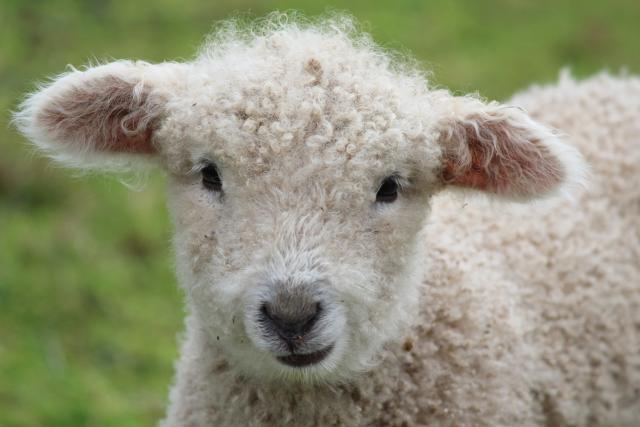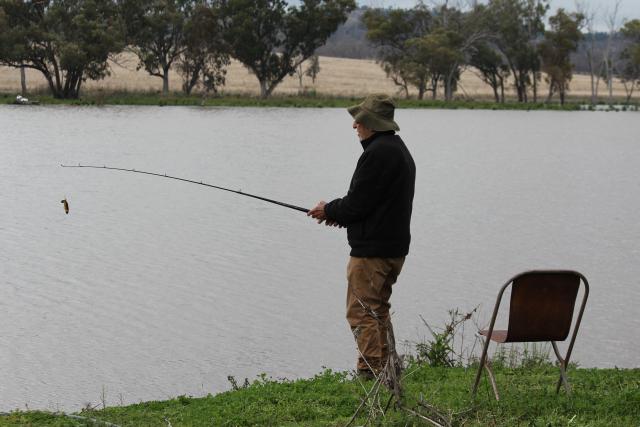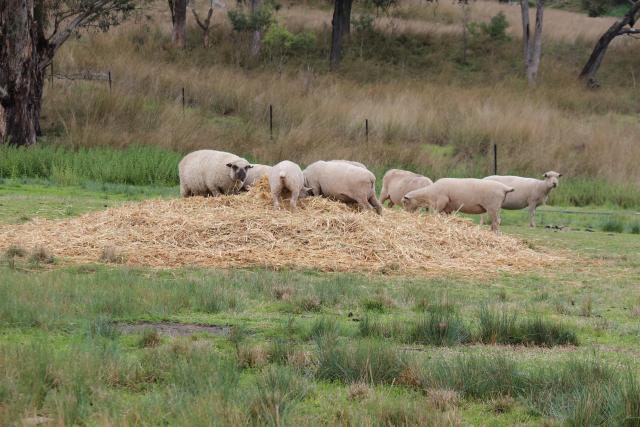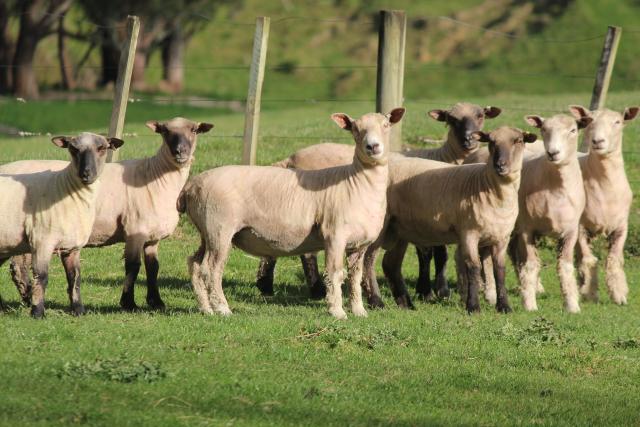The week started quite depressingly. This note I jotted down earlier in the week tells the story. Reading what I wrote I thought I should edit it but decided to run with the good, the bad and the ugly of farming.
Tuesday: The lows of farming – It is 1.20 pm, I feel like crying from frustration and sadness. I have achieved very little so far, the last hour has been spent down at the yards where two ewes lambed (twins and triplets). It didn’t take the crows long to spot them despite the fact they are under cover. Luckily the crows started on their tails and when I arrived down for my second check of the day they were a bloody mess. The younger of the two ewes (a maiden) was chewing on one of the lambs tails, initially I thought to clean it up after the crows but after a minute I realised she was trying to de-glove the lamb while it was trying to drink. There were four lambs with various lengths of tails left and one that hadn’t been touched – rejected by the ewe and crows both. It was impossible to tell which lambs belong to which ewe as the ewes didn’t seem to care which lamb went to have a drink. I went back up to the house just for a minute to get a bottle and when I arrived back two crows departed the scene of the crime. I fed the rejected one to buy myself a bit of time. After half an hour of trying to keep the ewe from de-gloving the lambs tails I decided to go and get a cage and put the lambs in – safe from crows and the loony ewe – until Dear Richie arrived home to help me sort the whole mess out. It’s times like this I really do wonder if it is worth the trouble!
Thursday: Richie had done the morning check of the ewes in the McLeod Paddock (so named as it borders on our boundary shared with McLeods Lodge) and advised me that the three ewes in that paddock (all scanned in lamb with triplets) hadn’t come up for their morning feed so had most likely lambed. These ewes were from the “wild mob” so I knew they would not tolerate the intrusion of us checking on them at this early stage.
Arriving home after work just before dark I rushed down to the paddock which unfortunately is too steep and heavily tree’d for the bike so I headed off on foot to check the three ewes. Sure enough I spotted the three ewes and they took off fairly smartly – each trailing one lamb – lambs that despite being a day old could already run like the devil was chasing them. I was philosophical about the loss of the other two from each ewe thinking oh well, one good strong fast lamb each is better then no lamb. I left them to it and walked back up the hill around the other side of the paddock and not far from the boundary fence I stumbled on another lamb lying in the grass. Well, it up and off like it had just met the devil. It went straight through the fence. I managed to scramble through the fence, albeit much more slowly then the lamb and I ripped my work shirt in the process, but my fifty something years young legs with buggered knees were no match for this one day old lamb! Up the hill we went but I was determined not to lose sight of it. Eventually I got ahead of it and turned. Then down the hill we went until it stumbled on a dead tree and I grabbed it. By this stage it was just on dark and after I got my breath back I proceeded, lamb held tight, cautiously down the hill, round the long way through a gate this time. When I got back as close to the ewes as I dared I threw the lamb towards them – it was the only way. It was then that a few more little heads popped up in the grass. I shook my head and trudged back up to the yards still not sure how many live lambs the trio had between them. Interestingly the lesson I learned was sometimes it is better to lamb where the ewe chooses – the previous ewes I put in the yards for safekeeping were the ones the crows got stuck into.
Sunday: A footnote on the above events – after moving the initial two ewes and their five lambs up to the house (in my garden again) two of the lambs died after a couple of days despite their tails being treated and banded and seeming to be drinking well off the ewes. The rejected lamb is now a poddy and doing well although it is early days for him yet. The two remaining lambs are strong a healthy, being shared between the two ewes – looney ewe has stopped trying to eat their tails, it must have been the stress. The three ewes with the triplets have seven lambs who are all as wild as meat ants.
Kermit the bus is getting very near to completion – well as complete as he is going to be for now. My good friends from Blitz Electrical have been out and checked the wiring and installed smoke alarms – it has been a full days work for them. The air conditioning we knew wasn’t working when we brought the bus so we have to decide if it will be cheaper to buy a new one.
Matt from Mag Plumbing has installed a carbon monoxide alarm and is coming back to complete the gas and water work next week.
I am very grateful that these two great tradies came out to help – they are both very busy at the moment and being so far out of town takes a good part out of their day.
Richie is heading off to the Highfields Pioneer Village this weekend with that bloody goat, our poddy lamb plus a few ewes and lambs. We were taking pigs but they have grown too big to handle! Volunteers at the village will look after the animals mid week and I will go down next weekend to collect them.
The alpacas have had a haircut thanks to our friends Chloe and Brett from Border River Alpacas who even came over and picked them up.
(SUBHEAD)
The Ryeland Sheep
Ryelands are another breed of sheep that are struggling in Australia. This breed are found throughout the world – there are some excellent studs in New Zealand I have seen. The breed originates from Archenfield in South Herefordshire UK where the soil i ideally suited to the growing of rye. Archenfield is known as the rye-lands. A breed of sheep that evolved naturally centuries ago, they came to Australia in 1919, and like so many other British breeds, have been bred to suit Australian conditions.
In the 16th Century Ryelands became famous for their fine wool, although the breed can be traced back to the 11th Century. The sheep developed with fluctuating fortunes into a breed of world wide significance. The Ryeland Flock Book Society was formed in 1903.
Incidently Ryelands are one of the breeds used to introduce the poll gene in the Australian Poll Dorset.
Ryelands have superb meat and downs type fine wool. In Australia, we have 14 registered studs with a ewe flock of around 400 ewes. Ryelands can be found in NSW, TAS, Vic and SA.










